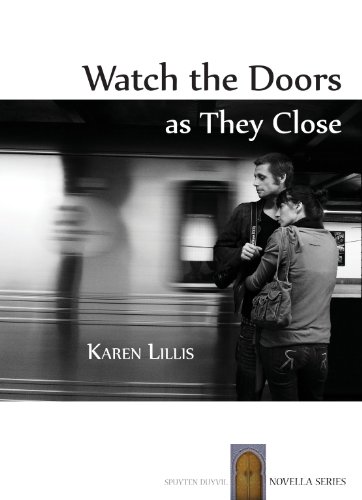Author bio
Karen Lillis
Publication
“Watch the Doors as they Close”
Hometown
Pittsburgh, PA
Bio
Karen Lillis is a bookseller and a writer of fiction, memoir, and poetry. The author of four novellas, including “Watch the Doors As They Close” (Spuyten Duyvil) and “The Second Elizabeth” (Six Gallery Press), her work has appeared in The Brooklyn Rail, Cashiers du Cinemart, Evergreen Review, LA Cultural Weekly, Lit Hub, Local Knowledge, Long Shot, Occupy Wall Street Poetry Anthology, Potomac Journal, Toad Suck Review, and Volume 1 Brooklyn, among others. She has been a small press blogger, a sidewalk bookseller, a rare book photographer, a bookstore clerk at St Mark’s Bookshop, a writer in residence at Shakespeare and Company in Paris, an art reviewer at The Austin Chronicle, and once wrote a short story on the side of a freight train. Her fiction was nominated for a Pushcart Prize and earned her a 2014 Acker Award for Avant Garde Excellence. Her article on the independent presses of Pittsburgh was a finalist for a Golden Quill Press Award. Find her Recommended Reads online at Karen’s Book Row.
About "Watch the Doors as They Close"
A woman plans to set down a faithful portrait of her ex-lover, just days after he’s fled their one-room romance. But as she looks back on the crash-and-burn affair, her writing quickly reveals her own contempt for and obsession with moody, unpredictable Anselm. The 35-year-old narrator is an unpublished writer and retail clerk who spends her working hours shelving in a downtown bookstore, her days off laying low in a Brooklyn luncheonette. Anselm is a charming but hapless recent New Yorker, composer of music, and an Ivy League drop-out who hails from a disastrous Appalachian childhood. His storyline is heartbreaking, yet the fallible narrator goes in and out of sympathy for him as she vacillates between telling his story and theirs. In a voice that evokes the melancholy of Jean Rhys and the frankness of Annie Ernaux, Watch the Doors As They Close recounts the intense affair as it disintegrates–all the while painting vivid scenes of American rural poverty and New York bohemia at the turn of the Millennium.


